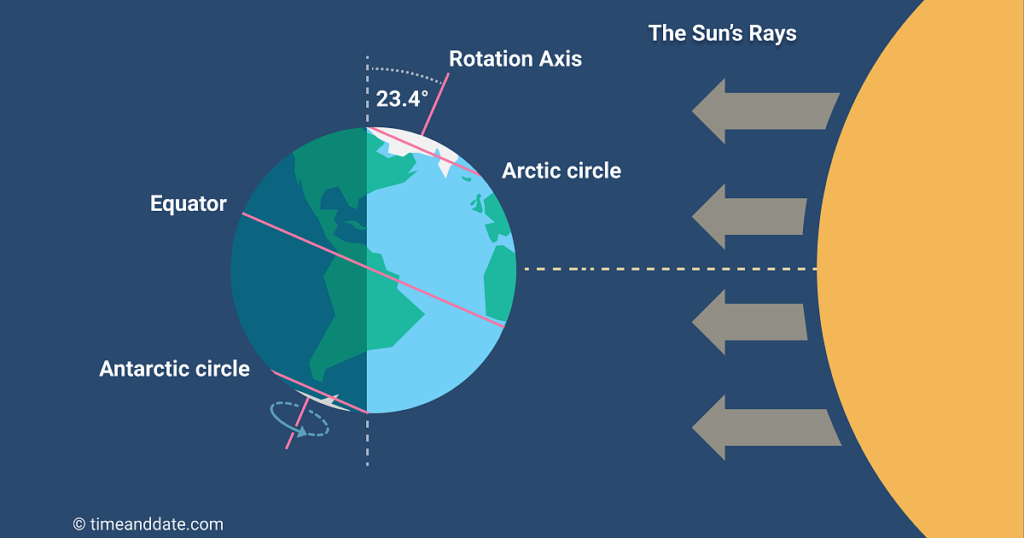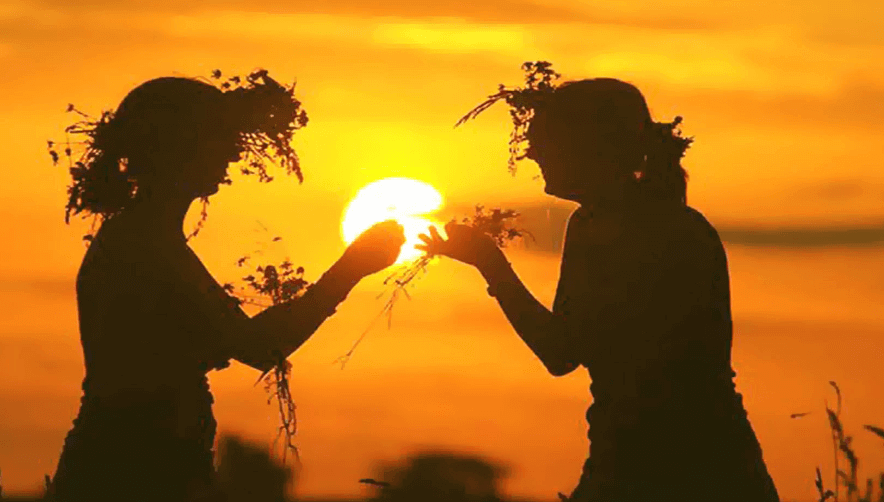Early dawn, late sunset. If you enjoy these long, enchanting bright days, Tuesday is a day to enjoy. June 21 is the summer solstice of 2022. This is the longest day and shortest night of the year in the Northern Hemisphere countries.
What is the Summer Solstice?

The summer solstice is the middle of summer, usually in the middle of the year. This is when the Northern Hemisphere begins summer and the Southern Hemisphere begins winter. According to astronomical studies, the Northern Hemisphere will tilt toward the Sun 23.5 degrees more than the Southern Hemisphere.
The 2022 summer solstice arrives at 5:14 a.m. Eastern time. At this exact time, the Sun appears directly over the Tropic of Cancer – as far north as in the sky year-round. Around the SS, the northerly motion of the Sun across the sky appears to pause briefly before changing direction for the next six months.
The Sun follows its longest and highest path in the sky, and you can observe sunrise and sunset at the northernmost points along the horizon.
Features of Summer Solstice

Hot weather
On the SS, because the Northern hemisphere is tilted towards the Sun, it receives the largest amount of light and radiation of the year. Therefore, the climate at this time will become hot, dry and hot.
The longest day of the year
Theoretically, all days of the year have 24 hours. But the summer solstice is considered the longest day of the year, because this is the day with the longest light, so you will feel that the day is longer than the night, it is long dark and light is fast.
Living things grow
The summer solstice weather is hot and humid, with a lot of rain, creating conditions for all things to multiply and develop. While plants actively photosynthesize and supplement nutrients for the upcoming dry season, animals also increase their search and storage of food for the winter.
Humans get sick easily
Although, the SS is the time when plants grow and harvest crops. However, this is also when harmful microorganisms and bacteria proliferate, threatening human health. The erratic weather changes will make us susceptible to diseases such as flu, cold, dengue fever, and malaria, …
Why do we celebrate the summer solstice?

People throughout history have celebrated major holidays with ceremonies such as bonfires and ceremonial dances to mark the passing of the seasons. Some ancient cultures, such as the Maya or the Aztecs, even built special monuments to mark the Sun’s changing path across the sky.
Stonehenge, built more than 5,000 years ago in present-day England, is perhaps the best known of these prehistoric sites. Some historians suggest that the large circle of free-standing rocks was once the solar calendar used to keep track of the seasons of the year. That’s because on the summer solstice, the sunrise aligns perfectly with the structure’s Heel, which lies outside the structure’s main circle.
Today, thousands of people gather at Stonehenge yearly to celebrate the solstices and equinoxes and the changing seasons.
Interesting facts about the summer solstice you may not know

The Sun seems to stand still.
On the summer solstice, when it is at the highest point north in the sky, the Sun will stop moving north or south and stay in the position of illumination perpendicular to the Tropic of Cancer. It will then reverse course and begin moving south again.
Earth is farthest from the Sun
Many people mistakenly believe that the SS is the time when Earth is closest to the Sun due to receiving a lot of radiation and light. But the truth is quite the opposite. On this day, the distance between the Earth and the Sun is the furthest of the year. The reason is, that the Earth will move to the aphelion (Aphelion) – the point in the orbit where the Earth is farthest from the Sun. The Earth will move to this position a few weeks after the SS.
The summer solstice is not exclusive to the Earth
Not only Earth but all planets in our solar system have a summer solstice ( SS ). Accordingly, the SS of Mars occurs a few days after Earth. With Uranus, the occurs every 84 years.
The summer solstice is not the hottest day of the year.
Although the summer solstice is the day the northern hemisphere receives the most radiation and sunlight, this does not mean it is the hottest day of the year. The hottest day of the year in the Northern hemisphere will fall in July or August as the oceans and continents heat up, allowing for higher temperatures. This phenomenon is called season delay.
